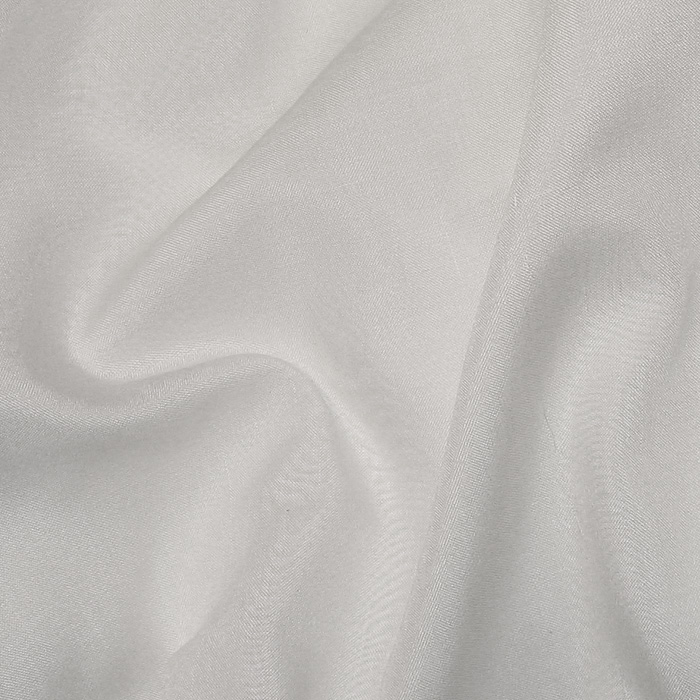It is one of the recent fabrics to hit the textile market for apparel and home furnishing. Bamboo lyocell is the most eco-friendly out of the three fabrics because it uses less chemicals and water and produces less waste than bamboo rayon and bamboo viscose.
 Bamboo Viscose Fabric Library Aesthetic Stories
Bamboo Viscose Fabric Library Aesthetic Stories
301 100 bamboo cotton Giza 88 Mercerised cotton same cotton and viscose yarns were used to produce single jersey and single pique knitted fabrics on the same knitting machine.

Bamboo viscose fabric. Chemically processed cellulose fibers. Try it and see the difference between bamboo viscose. Viscose is used to produced low-quality and cheap garments.
This fabric is suitable for a wide range of uses like bathrobes towels surgical clothes food packaging bedding and even hygiene products including. Our bamboo is processed into a fibre using organic chemicals that are covered under the Oeko-Tex Standard 100 certification and are 100 recyclable. The common method to do this is called the viscose process.
Although it tends to cost more than other typical fabrics its worth the investment. Bamboo viscose fabric is an excellent alternative to cotton linen and silk. Once the bamboo has dissolved this solution is pressed into fibers and then cooled.
BedVoyage uses Fiber Reactive dye as its perfect for all natural fibers which include cotton viscose bamboo silk wool and even wood and paper. Well the viscose process describes the way the bamboo is turned into fabric. In general the word Viscose refers to how the bamboo is turned into fabric that can be used for things like bamboo viscose sheets bamboo pajamas and so much more.
Labels that state clothing is made of viscose rayon or viscose rayon are the same thing. The process is pretty straightforward when it comes down to it. The top countries of suppliers are India China and Pakistan from which the percentage of bamboo viscose fabric supply is.
However in order to turn bamboo into bamboo viscose or bamboo fabric heavy processing is needed. If a product isnt directly made from bamboo fiber but is a manufactured fiber for which bamboo was the plant source it should be labeled using the generic rayon or rayon. Unfortunately a lot of clothing on the market is made from bamboo viscose.
Bamboo viscose bamboo rayon and rayon from bamboo. The terms often used when describing bamboo fabrics are. Bamboo rayon is most commonly made through what is known as the viscose process which involves dissolving cellulose material in this case bamboo in a chemical solution to produce a pulpy viscous substance.
Bamboo fabric and viscose are often touted as ecofriendly alternatives to polyester. The majority of bamboo fabric is the same as rayon. Polyester nylon acrylic viscose and rayon are some of the cheapest fibers to produce.
And consumers often accept the advertising claims that boast their earth friendly properties. Cotton is actually a fabric that does tend to get attacked here and again by microorganisms so although it wicks away moisture its not always the best choice for wound dressings and the like. In fact you could consider that bamboo viscose generic viscose and rayon are all the same material.
Man-made fibers are relatively cheaper to produce than natural fibers. Due to the Kun bamboo fabric is sometimes said to be naturally antibacterial. One thing in the fight between bamboo viscose vs cotton that bamboo wins is the antimicrobial property of bamboo viscose.
The bamboo we sell at Simplifi Fabric is bamboo viscose manufacturer with the closed loop process. Viscose is a term used to refer to any type of fabric that is made using the viscose. BedVoyage use rayon from bamboo because it is naturally hypoallergenic and thermal regulating incredibly soft helps you sleep cooler is moisture wicking and resists odor and bacteria.
Common Benefits of Rayon and Viscose Bamboo. All three fabrics are hypoallergenic silky-soft and bacteria resisting. Its labeled natural bamboo fabric when it isnt.
The Viscose Process Lets start with the first question What is the viscose process. Bamboo viscose made fabric had significant effect on odor of body sweat. There are claims that bamboo viscose fabrics have a unique antibacterial quality due to an antimicrobial bio-agent called bamboo Kun.
The majority of bamboo fabric produced worldwide is bamboo viscose which is cheap to produce even though it has environmental downsides and represents workplace hazards. Kun is found naturally in the living bamboo fibre. The properties of the Egyptian cotton are given in Table 1.
What is rayon fabric therefore has a simple answer its just an older more generalized term for fabric made from wood or plant cellulose. It bears the soft and comfy feel without sacrificing breathability and durability. Bamboo Fabric vs Rayon.
All three bamboo rayon bamboo viscose and bamboo lyocell are perfect materials for households such as. Bamboo gets softer as you wash it and is an easy-care fabric. The process utilises a closed-loop system where all chemicals used are.
This process had already existed for a long period of time when in 2003 they also started using it for bamboo calling it bamboo viscose. This is then pushed through a spinneret and spun into the fibres that can then be made into threads and fabrics. Bamboo fabric or at least fabric that claims to be bamboo is usually super soft.
Generally the bamboo is broken up and dissolved in a solution. Bamboo viscose also known as bamboo rayon or regenerated bamboo is a cellulose fibre made from bamboo. Both Rayon or Viscose are very absorbent and take dye very easily.